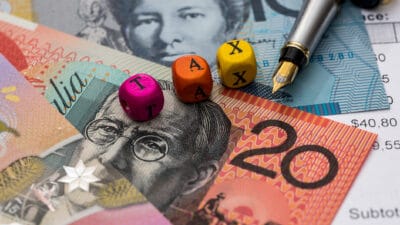As the share prices of many companies on the S&P/ASX 200 Index (ASX: XJO) fall heavily, and the super balances of most retail and industry funds drop, a common question is, 'what should I do about my super?'
Super has further come under the spotlight over the past week with the government's announcement that more people will be eligible to access super under hardship provisions.
Should you withdraw from your super?
Under new government rules set to come through, Australians suffering under financial hardship during the coronavirus crisis, through either being unemployed or having working hours reduced by 20% or more, will be allowed to withdraw $10,000 tax-free from their super fund this financial year and a further $10,000 the following year.
Hardship rules for taking super out early were in place before the crisis, but were only available to a select few with very tough restrictions.
It's important to keep in mind that by withdrawing money now, it is likely that you will be realising losses on the withdrawn money due to the recent stock market crashes. Both local and international shares account for a significant proportion of most balanced super funds.
In addition, you will be missing out on the benefit of compounding super returns.
The average balanced super fund grows by around 7% per annum. So, based on this 7% annual return, a $10,000 invested in super today would actually be worth $19,672 in 10 years' time, $38,697 in 20 years' time, and $149,745 in 40 years' time.
Therefore, by withdrawing $10,000 from your super now, you will be missing out on this benefit of compound interest and eat into your nest egg when you retire.
However, obviously if it reaches the stage where you are unable to pay your rent or pay your mortgage, then accessing the money may become necessary.
It's also important to keep in mind that the big four Aussie banks have all announced that they will postpone mortgage repayments for customers that have lost their job or suffered loss of income as a result of the crisis, for a period of up to six months.
In addition, the Newstart allowance has been significantly increased for people that have lost their jobs or income, so it would be prudent to only withdraw money from your super as a last resort.
Should I change my super investment structure?
As has been pointed out by major super funds such as Australian Super over the years, investors that switch their investment options during times of major market corrections to a more conservative option are likely to be worse off in the long run.
When the market does eventually rebound, most will be missing out. Trying to 'time the market' and switch back to shares before the rebound happens rarely works.
Nobody knows for sure when the market eventually will recover. It's only by looking back in time with the benefit of hindsight that you can really figure out when the bottom of the market actually occurred.
Also, market recoveries can come very quickly and by the time you try to switch back to shares, it can be too late.
This also applies to investors with self-managed super funds (SMSFs) that sell some of their direct ASX shareholdings to increase their percentage of cash or buy other investments such as direct property.
Foolish takeaway
By withdrawing from super now, or by reducing your exposure to shares in your super fund, you will be selling at a low point in the investment cycle and be missing out on potential gains in the future.
Only withdraw from your super if it is absolutely necessary to do so, and try to avoid switching your super investment options in response to short-term market movements.








